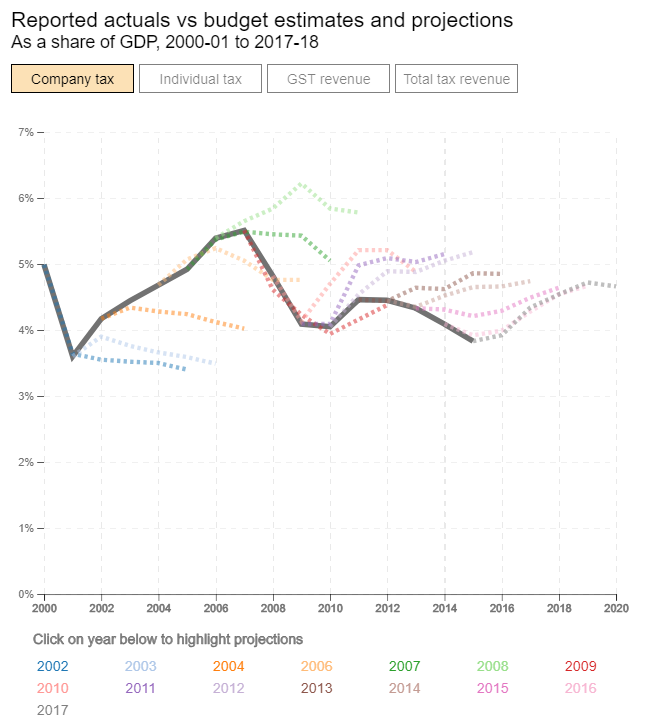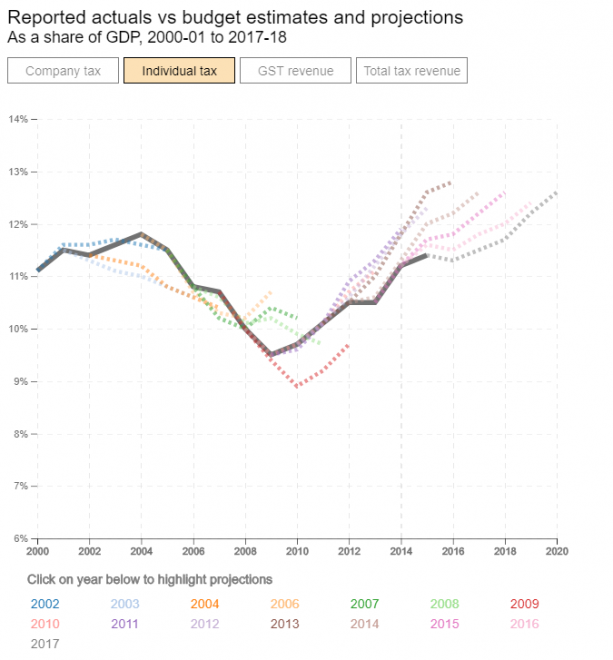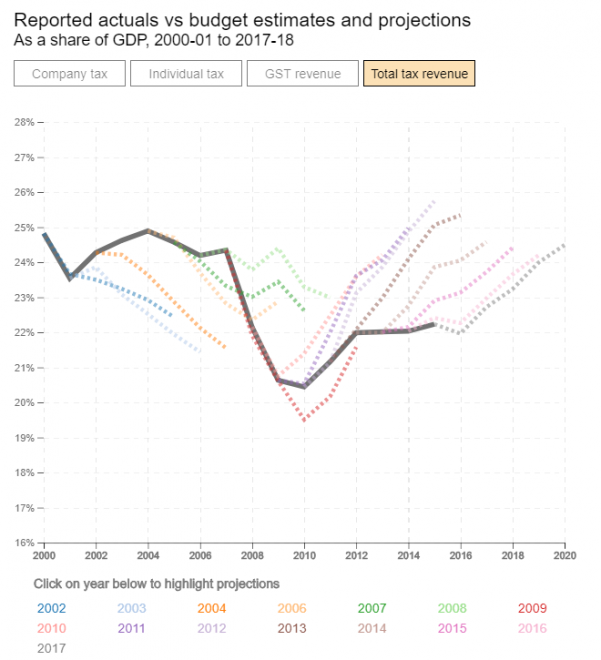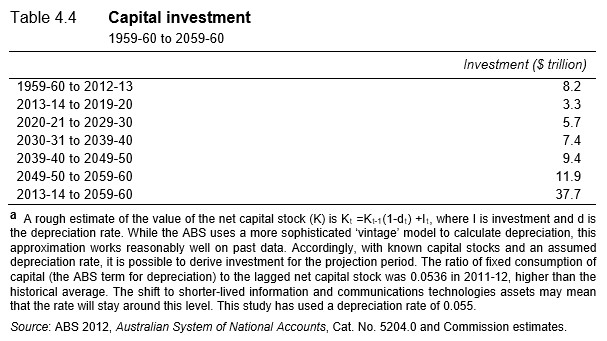Peeling away the spin, tonight’s Federal Budget delivered by Treasurer Josh Frydenberg was a fairly dull affair.
If you believe the forecasts, the Budget will magically catapult into surplus next financial year, with bigger surpluses projected over the forward estimates:

While Houses & Holes will analyse these numbers separately, all I want to say is that these Budget projections must be taken with a huge pinch of salt and considered of very low reliability, given Treasury’s abysmal history of forecasting tax revenues (see below charts).



Indeed, this Budget must be viewed as a pre-election political document aimed at painting the Government in the best possible light as “paying down Labor’s debt” (a phrase used repeatedly in Josh Frydenderg’s speech), as well as aiming to boobytrap a future Labor Government (who will get blamed when the inevitable Budget downgrades arrive).
Nevertheless, there were a few noteworthy measures announced by the Government.
Tax cuts better targeted than expected:
The biggest pleasant surprise was that the Coalition’s flagged tax cuts are fairly well targeted. Rather than giving money away to higher income earners by adjusting the tax thresholds, the Coalition will instead more than double the low-and-middle income tax offset from 2018-19. This will mean that taxpayers earning up to $126,000 a year will receive a tax cut, amounting to up to $1,080 for a single per year and $2,160 for families on a dual income.
More than 10 million taxpayers are projected to benefit, with 4.5 million lower-income earners receiving the full amount.
The 32.5% tax rate will also be lowered to 30% from 1 July 2024, covering all taxpayers earning between $45,000 and $200,000. This would mean that 94% of taxpayers would pay no more than 30 cents in the dollar.
This second phase is obviously far less significant as it is so far out and needs to survive two future governments – highly unlikely.
More help for small businesses:
There was a raft of measures announced aimed at small businesses, including:
- Cutting the tax rate to 25% (irrelevant to many business owners as they pay tax at their marginal personal rate);
- Increasing their access to finance with a new $2 billion fund;
- Expanding “Tony’s tradies” instant asset write-off from $25,000 to $30,000 for businesses with turnover under $50 million, and allowing it to be used every time an asset under that amount is purchased.
Of these three measures, the expanded asset write-off is easily the most significant and should play-out well among small business owners.
Increased infrastructure investment, but still badly underfunded:
Last year’s rolling $75 billion infrastructure spending over 10-years has been increased to $100 billion. And last year’s $1 billion Urban Congestion Fund to support projects at a State level to fix pinch points and improve traffic flow has also been increased to $4 billion.
This level of infrastructure investment still won’t be nearly enough to keep up with the 3.5 to 4.0 million population growth expected to be added over this 10-year period, nor backfill the infrastructure deficit that has accumulated over the past 15 years as Australia’s population has soared:

Remember, the Productivity Commission (PC) in 2013 estimated that total private and public investment requirements over the next half century will need to be around 5-times the cumulative investment made over the last half century:

So, with the federal government wedded to its mass immigration ‘Big Australia’ policy, resident Australians’ living standards will continue to be crush-loaded, as they have been over the past 15 years.
A token investment in ‘skills’:
A new $525 million skills package was announced, which will apparently create 80,000 new apprenticeships in industries with skills shortages. Incentive payments to employers will also be doubled to $8,000 per placement, and apprentices will receive a $2,000 incentive payment.
Initial Impression:
Ignoring all the spin around the rubbery surplus numbers, this pre-election Budget was a fairly conservative affair with less pork than I was expecting.
While it likely won’t move the needle much from the electorate’s perspective, it could have been much worse.
Be grateful for small mercies.

